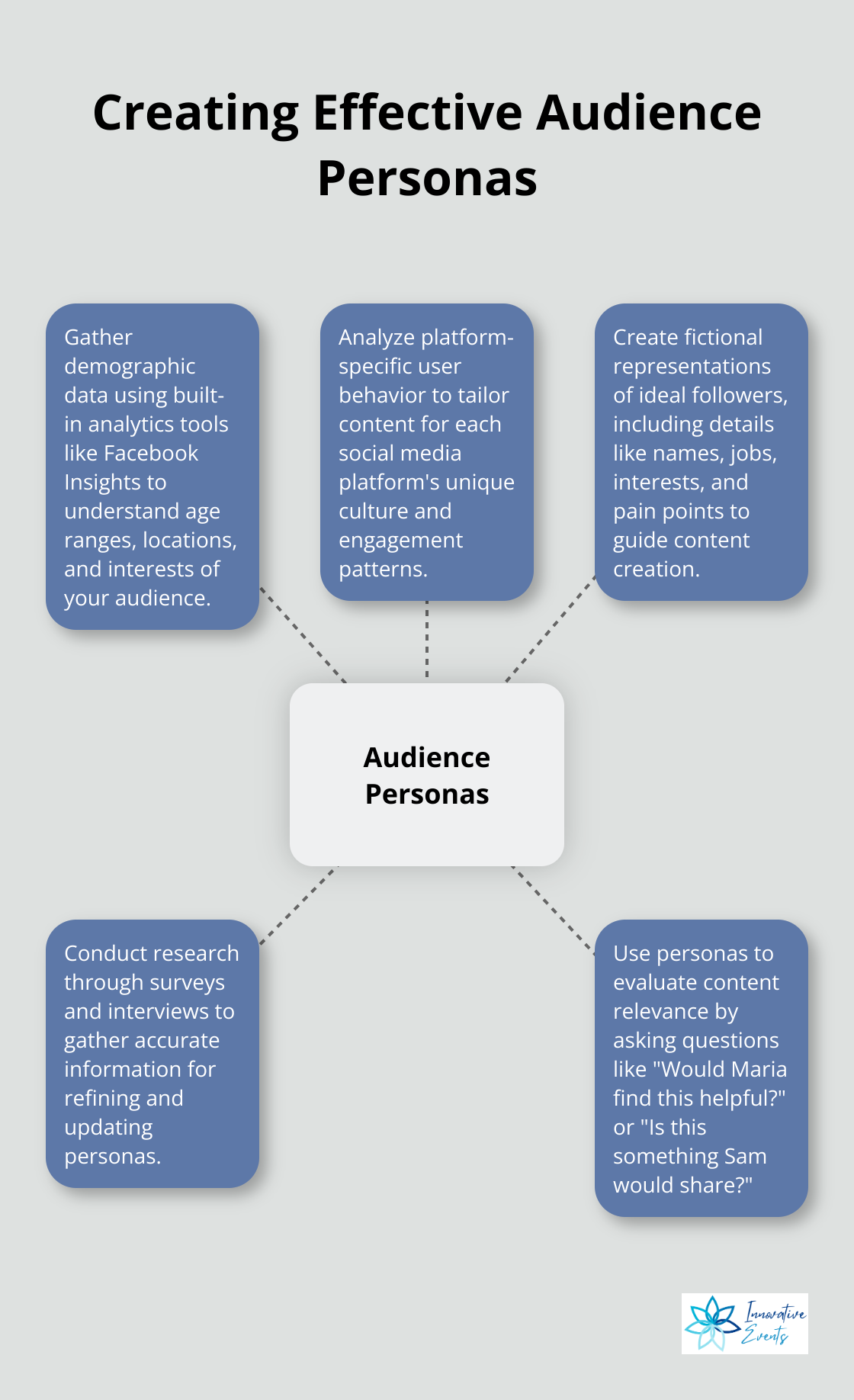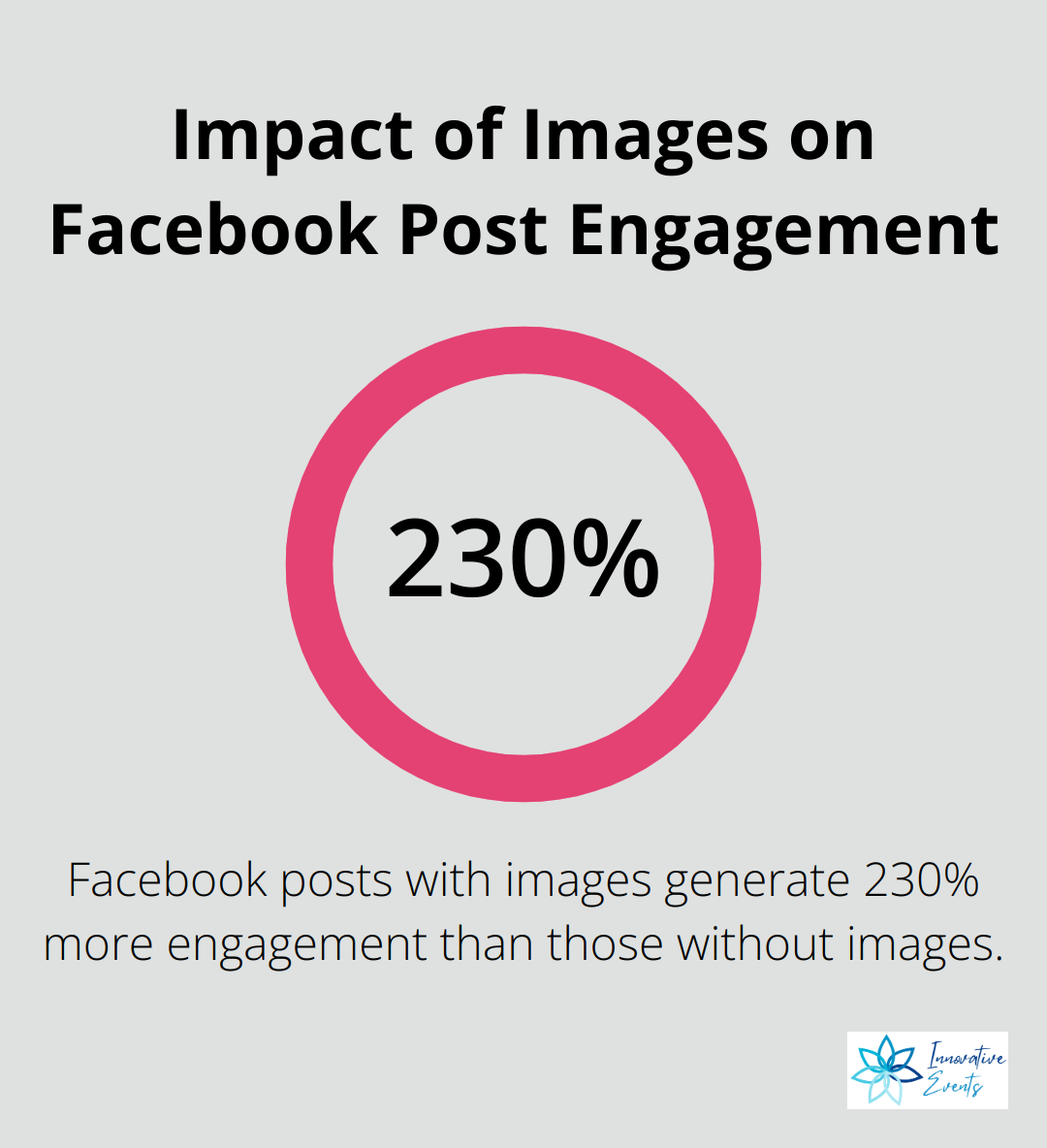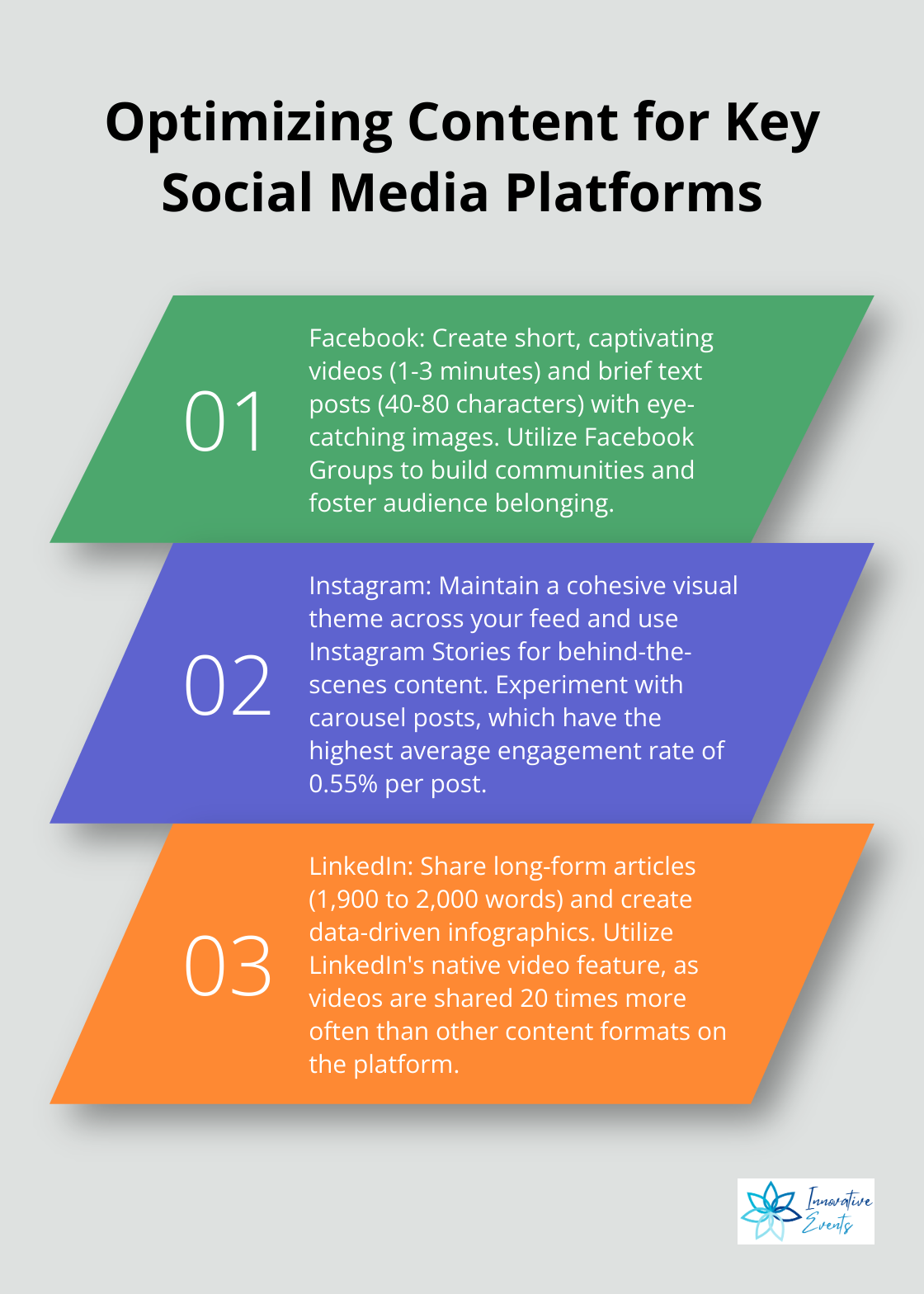Social media content creation is a powerful tool for businesses to connect with their audience. At Innovative Events, we’ve seen firsthand how effective social media strategies can transform brand engagement and drive results.
In this post, we’ll share our expertise on crafting compelling content that resonates across platforms. Get ready to elevate your social media game with practical tips and proven techniques.
Who Is Your Social Media Audience?
Identifying Your Target Demographics
Social media success starts with a deep understanding of your audience. Most social platforms offer built-in analytics tools that provide valuable insights. Facebook Insights, for example, shows the age ranges, locations, and interests of your audience. This data helps you build a clear picture of who engages with your brand.
Tools like Sprout Social can help you analyze broader demographic trends in your industry. This wider view often reveals untapped segments you might be missing.
Analyzing Platform-Specific User Behavior
Each social media platform has its own unique culture and user behavior. Instagram users engage more with visually striking content, while LinkedIn audiences prefer professional, industry-specific insights.
To master these differences, observe how users interact on each platform. Focus on the types of content that get the most engagement, the tone of conversations, and the popular hashtags. This observation will inform your content strategy for each platform.
Creating Audience Personas for Tailored Content
After you gather demographic data and behavioral insights, create audience personas. These fictional representations of your ideal followers include names, jobs, interests, and pain points.
For instance, you might create “Marketing Manager Maria,” a 35-year-old professional looking for innovative ways to promote her company’s events. Or “Startup Founder Sam,” a 28-year-old entrepreneur seeking networking opportunities and industry insights.
These personas should guide every piece of content you create. Before posting, ask yourself: “Would Maria find this helpful?” or “Is this something Sam would share with his network?”
Creating audience personas involves conducting research through surveys and interviews and analyzing your social media engagement to gather accurate information. As you gather more data and interact with your audience, refine and update them. The more accurate your personas, the more targeted and effective your content will be.

Now that you understand your audience, it’s time to craft content that speaks directly to them. In the next section, we’ll explore how to develop a consistent brand voice and create engaging content that resonates with your target demographic.
How to Create Content That Captivates
Develop a Distinctive Brand Voice
Your brand voice defines the personality that shines through in every piece of content you create. It makes your brand recognizable and relatable to your audience. Start by defining three to five key characteristics that represent your brand. Are you playful and witty? Professional and authoritative? Compassionate and inspiring?
Create a style guide that outlines how to express these traits in your content. Include examples of tone, vocabulary, and emoji usage that align with your brand personality. Share this guide with everyone involved in content creation to ensure consistency across all platforms.
Master the Art of Visual Storytelling
In a world where users scroll through hundreds of posts daily, visually striking content stops thumbs in their tracks. Facebook posts with images generate 2.3x more engagement than those without.

But it’s not just about adding any image – it’s about telling a story visually.
Use high-quality photos, infographics, and short videos to convey your message quickly and effectively. Tools like Canva offer templates and design elements that make creating professional-looking visuals easy (even for those without graphic design experience).
When you craft visual content, think about the emotion you want to evoke and the story you want to tell. A behind-the-scenes photo of your team preparing for an event can humanize your brand and create a sense of connection with your audience.
Harness the Power of User-Generated Content
User-generated content (UGC) significantly influences brand awareness, engagement, and conversion rates. It not only offers social proof but also fosters a sense of community around your brand. Encourage your followers to share their experiences with your products or services by creating branded hashtags and running contests.
For example, if you’re an event planning company, ask attendees to share their favorite moments from your events using a specific hashtag. Repost the best submissions and give credit to the creators. This provides you with fresh content and makes your followers feel valued and heard.
Ride the Wave of Trending Topics
Staying relevant means keeping your finger on the pulse of what’s happening in your industry and the world at large. Use tools like Google Trends or Twitter’s trending topics to identify conversations that align with your brand values and audience interests.
However, don’t jump on every trend. Be selective and only engage with topics that genuinely resonate with your brand and audience. When you participate in trending conversations, add value by offering a unique perspective or insight related to your expertise.
The key to successful social media content creation lies in authenticity and relevance. A strong brand voice, visual storytelling, user-generated content, and thoughtful engagement with trends will help you build lasting connections with your audience. Now, let’s explore how to optimize this content for different social media platforms to maximize its impact.
How to Optimize Content for Different Social Media Platforms
Facebook: The Versatile Giant
Facebook offers diverse content opportunities. Users spend 100 million hours watching videos on Facebook daily. Create short, captivating videos (1-3 minutes) that tell a story or provide value quickly.
For text posts, brevity wins. Posts with 40-80 characters see 86% higher engagement rates. Use eye-catching images or infographics to complement your text and increase shareability.
Facebook Groups build communities. Share exclusive content, host Q&A sessions, and encourage discussions to foster audience belonging.
Instagram: Visual Storytelling at Its Finest
On Instagram, aesthetics rule. Maintain a cohesive visual theme across your feed to create a strong brand identity. Use tools like VSCO or Lightroom for consistent photo editing.
Instagram Stories share behind-the-scenes content, quick tips, or time-sensitive information. Use interactive features (polls, questions, quizzes) to boost engagement. (500 million accounts use Stories daily.)
For feed posts, try carousel posts. They allow multiple images or videos in a single post, perfect for step-by-step guides or product showcases. Carousels are the most engaging content type, averaging a 0.55% engagement rate per post.
LinkedIn: Professional Content Hub
LinkedIn users seek professional insights and industry news. Long-form articles perform well here. Try 1,900 to 2,000 words for maximum shares.
Infographics shine on LinkedIn. Create data-driven visuals that offer valuable industry insights. Use tools like Piktochart or Venngage for professional-looking designs.
LinkedIn’s native video feature deserves attention. Videos are shared 20 times more often than other content formats on the platform. Share thought leadership content, industry insights, or company culture videos to engage your professional network.
Twitter: Concise and Timely
Twitter’s fast-paced nature demands quick, punchy content. Despite the 280-character limit, tweets between 71-100 characters get the most engagement.
Hashtags matter on Twitter. Use tools to find relevant, trending hashtags in your industry. Limit yourself to 1-2 hashtags per tweet for optimal engagement.
Twitter polls drive significant engagement. Use them to gather opinions, conduct market research, or entertain your audience.
The key to social media success lies in understanding each platform’s unique ecosystem and tailoring your content accordingly. Experiment with different formats, analyze your results, and refine your strategy continuously. (This approach creates content that resonates with your audience and drives meaningful engagement across all platforms.)

Final Thoughts
Social media content creation demands dedication, creativity, and adaptability. You must understand your audience, craft engaging content, and optimize for each platform to build a strong online presence. The social media landscape changes rapidly, so you should stay curious and open to learning new strategies, tools, and best practices.
Experiment with different content types, posting schedules, and engagement tactics to find your unique voice and style. Use analytics tools to measure the performance of your content and adjust your strategy based on these insights. At Innovative Events, we’ve witnessed how effective social media strategies can transform businesses.
Our “9 Summits in 9 Months” initiative at Ascent Concierge Health showcases the power of a tailored approach to achieving goals. You can optimize your social media presence through continuous refinement and personalization (just as we help executives optimize their health and performance). Start implementing these strategies, measure your results, and watch your online presence flourish.

